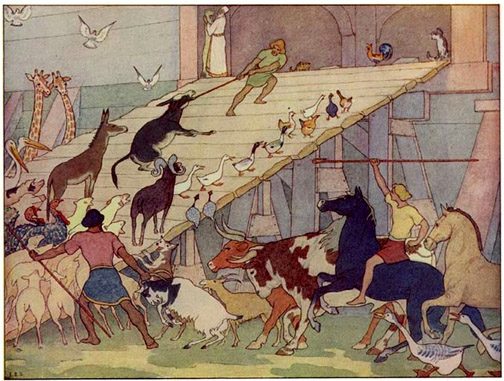Noah was 600 years old. He was “a righteous and wholehearted man” in his time.
He had three sons, Shem, Ham and Japeth. He also had a wife and three daughters-in-law, but we never learn their names.
The parsha tells us the earth had gone to ruin. In fact, it uses the word “ruin” four times in two verses. All flesh was ruined, according to the parsha. Was God including animals? It doesn’t say.
Noah built an ark, or boat, of gofer wood. (No one knows what gofer wood is, though there are lots of guesses.)
The parsha tells us exactly how long the ark was: 300 cubits, or about 450 ft long, depending on whose measurement you use. The biggest luxury yacht today is 590 feet. A football field is 360 feet.
In the ark Noah built a skylight or window. He made the ark with three levels.
Into the ark he brought one male and one female of each species, including flying and crawling things. Of edible things (or in a later verse, ritually pure things) he brought seven males and seven females.
Then it rained for 40 days.
The water swelled till it covered the highest mountains. The birds, the beasts, even the crawling things were blotted out.
God brought a rushing wind so the waters went down. After 150 days, Noah sent out a raven, then, seven days later, a dove, to see if they could find dry land. But they came back to the ark. Then he sent the dove out again and it came back with the leaf from an olive tree in its beak. Noah waited another 7 days and sent the dove out again. It never came back. So Noah knew that there was firm ground on the earth.
Food for Thought
As Rabbi Michael Dolgin points out, God tells us after the flood: I will never do this again. “I will clean up your mess only once. If we continue to destroy Earth’s climate and its biodiversity, God will not press a Divine reset button and start life over again.” So what lesson can we learn from the Noah story?

